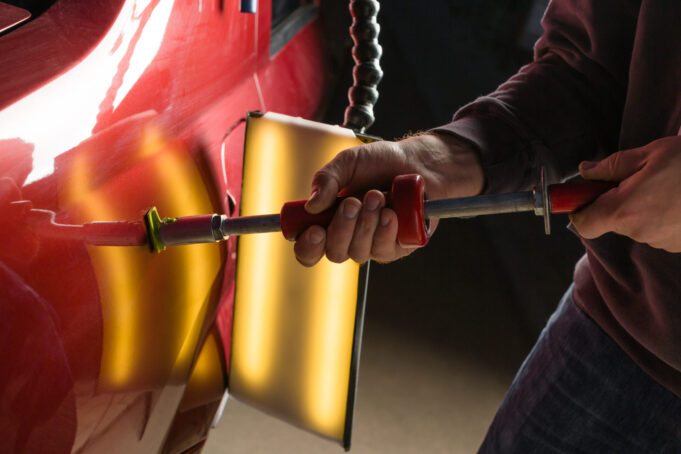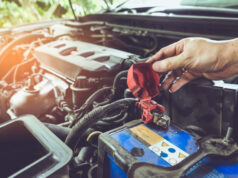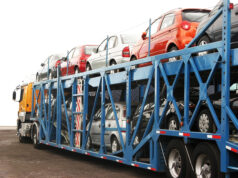Dents, dings, and minor bodywork imperfections on your car can be more than just an eyesore. They can reduce the resale value of your vehicle and lead to more extensive damage if left untreated.
While traditional bodywork methods often involve filling, sanding, and repainting, Paintless Dent Repair (PDR) is an innovative technique that offers a quicker and often more cost-effective solution. But what tools are essential for this procedure? Let’s dive in and demystify the world of PDR tools.
Main Categories of PDR Tools
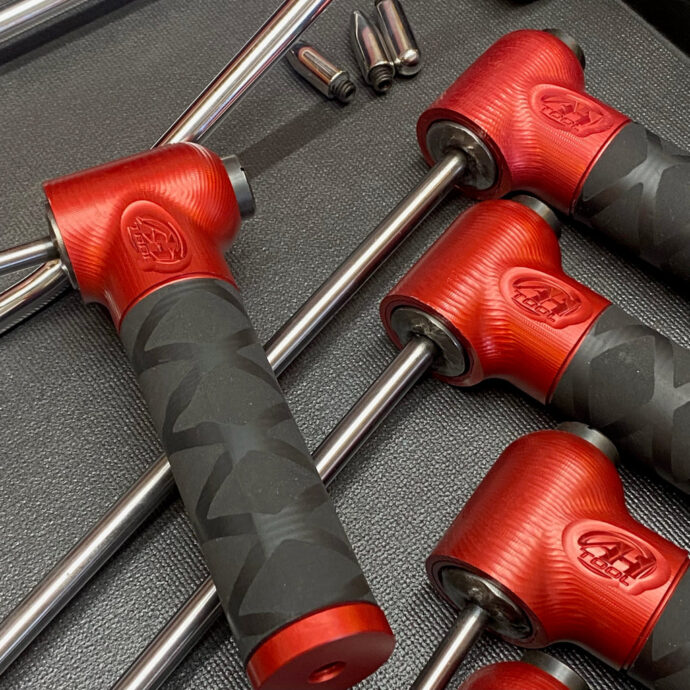
PDR tools can be broadly categorized into:
- Access Tools: Used to create access points for other PDR tools.
- Leverage Tools: Leverage or manipulate dents from behind.
- Surface Tools: Address dents from the exterior of the panel.
Access Tools
To access the backside of dents, technicians often need to go through various obstacles, whether it’s interior panels, insulation, or bracing. Here are the main access tools:
- Wedge Tools: Wedges help create a small gap in tight areas, such as between a door and its frame. This gap provides an entry point for other tools without damaging the vehicle.
- Trim Tools: These are designed to remove interior trim and panels safely. Removing these panels grants better access to dented areas.
- Hooks & Picks: In some situations, small hooks and picks become invaluable. They can help pull wires, position lighting, or manipulate small components.
Leverage Tools
These are the core instruments in a PDR technician’s toolkit. They come in various shapes and sizes to cater to different types of dents and vehicle panels.
- Rods & Bars: These are elongated tools with various bends and tips. They are inserted behind a panel to push out dents. The diversity in their designs allows technicians to approach a dent from different angles.
- Whale Tails: Named because of their shape, these tools are broad and flat. They’re ideal for large, shallow dents, often found on doors or wide panels.
- Hammer & Tap Downs: While PDR mainly involves pushing from behind, sometimes the metal needs a little tapping from the front to level it perfectly. Tap downs, in combination with specialized PDR hammers, help achieve this.
Surface Tools
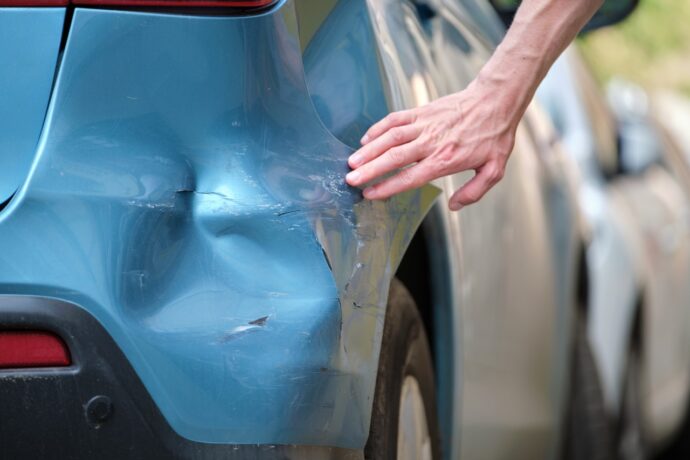
Not all dents can be repaired from behind. In cases where accessing the back of a dent is challenging, these tools come into play.
- Glue Pulling Tools: This method involves attaching pulling tabs to the dented area using specialized hot glue. Once the glue has set, technicians use slide hammers or mini lifters to pull the dent outwards. After achieving the desired result, the glue can be safely removed without harming the paint.
- Suction Cups: These are simple tools, but effective for certain types of dents. They create a vacuum on the panel’s surface and allow for pulling. They are often used for larger, shallow dents.
- Magnetic Roller Tip Tools: Using magnetism, these tools assist technicians in manipulating the metal without physically touching the back of the panel. They are especially useful for roofs or bonnets where access can be restricted.
Lighting
Perfect lighting is crucial in PDR. Dents and imperfections become highly visible under the right lighting conditions.
- LED Lights & Reflective Boards: These help technicians see the distortion caused by the dent. As they work, the reflections change, guiding them to achieve a flawless finish.
PDR Tool Kits & Sets
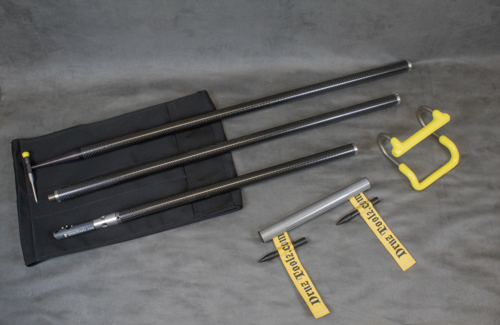
For those just starting out or looking for a comprehensive solution, several PDR tool kits are available in the market. These kits often come with a combination of the tools mentioned above, catering to a wide variety of repair needs.
Caring for Your PDR Tools
Like any professional equipment, PDR tools need regular maintenance.
- Cleaning: Ensure your tools are clean. Residue, especially from glue pulling, should be removed after every use.
- Inspection: Regularly inspect your tools for wear and tear. Bent or damaged tools can affect the repair quality.
- Storage: Store your tools in a dry, organized manner. Many technicians use specialized tool carts or cases.
FAQs
What is the primary difference between PDR and traditional dent repair methods?
The main distinction between PDR and traditional dent repair is how they approach the dent itself. Traditional methods often involve filling the dented area with fillers and then repainting it. PDR, on the other hand, focuses on manipulating and reshaping the actual metal, preserving the original paint job, and avoiding the use of fillers or paint.
Can PDR be used for all types of dents and damage?While PDR is effective for many dents, especially minor ones, it may not be suitable for all types. Deep dents, sharp creases, or damages where the paint has been chipped or cracked might not be ideal candidates for PDR and may require traditional repair methods.
How long does a typical PDR process take?
The duration of a PDR process can vary based on the severity and number of dents. Small, minor dents can be fixed in as little as an hour. However, more extensive damage or multiple dents might require several hours or even a full day.
Is PDR a more affordable option compared to traditional dent repair methods?
Generally, PDR can be more cost-effective than traditional methods because it avoids the costs associated with materials like fillers, paint, and labor-intensive processes like sanding. However, the exact cost can vary depending on the damage’s extent and the technician’s expertise.
Are there any risks associated with using glue-pulling tools on my car’s paint?
When used correctly, the specialized hot glue used in the PDR process should not damage your vehicle’s paint. It’s designed to bond with the pulling tabs and release cleanly once the repair is completed. However, always ensure a professional or someone familiar with the process is handling the repair to avoid potential mishaps.
How do I choose the right PDR technician for my car?
When choosing a PDR technician, look for someone with extensive experience and positive reviews from previous clients. It’s also beneficial if they have undergone professional training or certification in PDR. Asking for before-and-after photos of their previous work can also give you a sense of their expertise and results.
Final Words
PDR is an art and science combined. It requires a keen eye, a steady hand, and the right tools. By understanding the purpose and function of each tool, technicians can tackle a wide range of dents and imperfections, restoring vehicles to their pristine condition. Whether you’re a seasoned pro or an enthusiastic beginner, having the right tools in your arsenal is the key to flawless dent repair.

